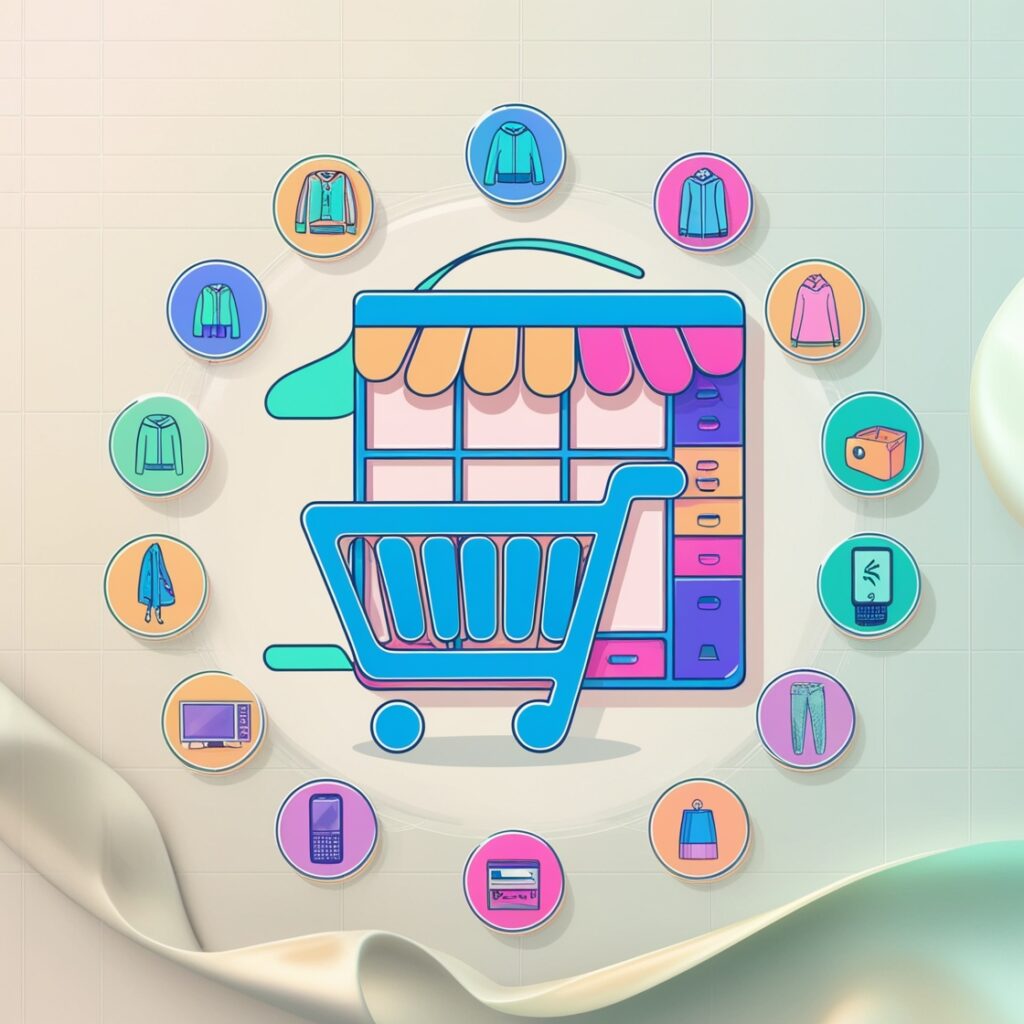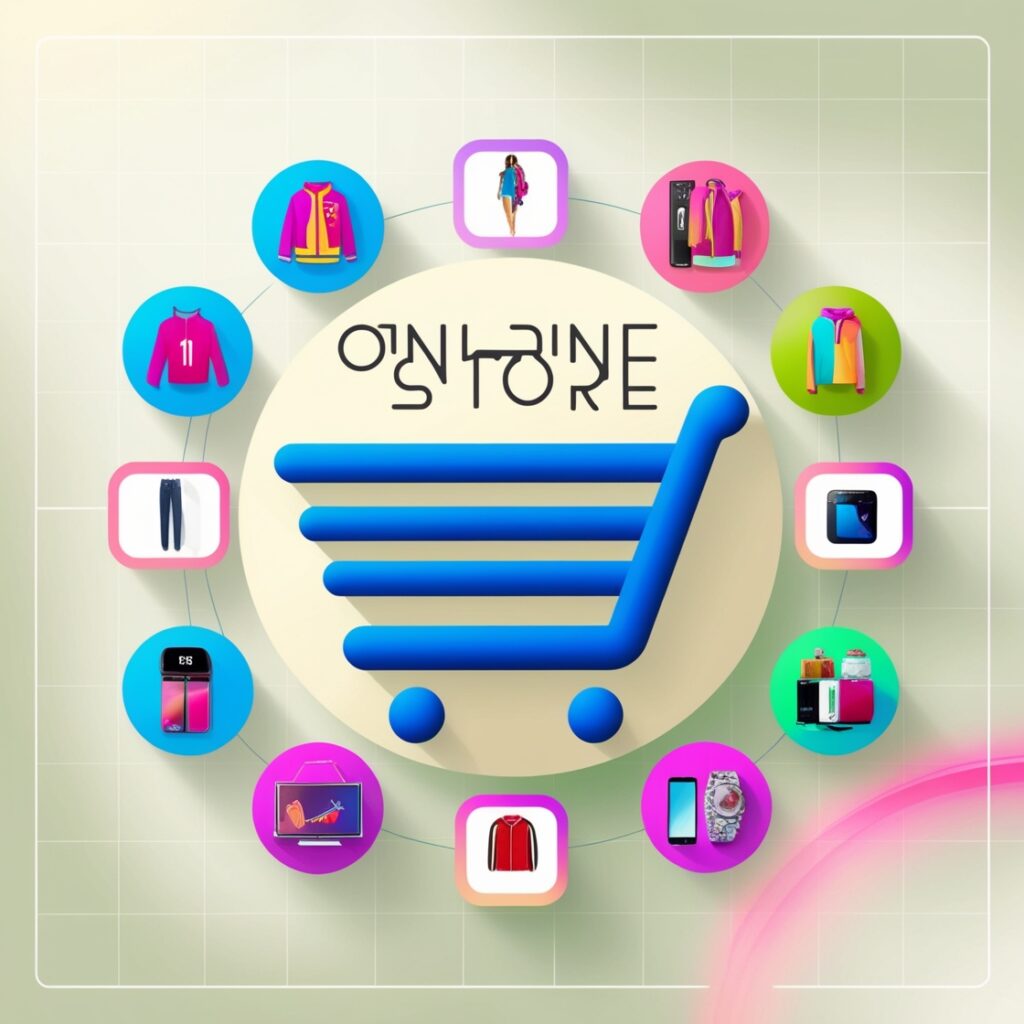Starting an online store is one of the most rewarding ways to launch a business in the digital age. With e-commerce thriving, now is the perfect time to turn your idea into reality. Whether you want to sell products, digital downloads, or services, this step-by-step guide will show you how to build an online store from scratch.
Why Start an Online Store?
An online store offers many advantages, including:
• 24/7 Availability: Sell to customers anytime, anywhere.
• Low Overheads: Avoid the costs associated with physical stores.
• Global Reach: Access a worldwide audience.
Now, let’s explore how to build your online store step-by-step.
Step 1: Choose a Niche and Products to Sell
Before building your online store, define your niche and product offerings.
• Identify Your Passion: What interests you? Fashion? Gadgets? Art?
• Research Market Demand: Use tools like Google Trends or Keyword Planner to find popular products.
• Study Your Competitors: Analyze successful online stores in your niche to identify gaps and opportunities.
Step 2: Select a Platform for Your Online Store
Choosing the right e-commerce platform is crucial. Popular platforms include:
1. Shopify: User-friendly and designed for beginners.
2. WooCommerce: A plugin for WordPress, ideal for flexibility.
3. BigCommerce: Scalable for growing businesses.
4. Squarespace: Perfect for visually appealing stores.
5. Wix: Great for smaller stores with drag-and-drop ease.
Pro Tip: Shopify is excellent for beginners, while WooCommerce offers more control for advanced users.
Step 3: Register a Domain Name
Your domain name is your store’s digital address. Choose a name that:
• Reflects Your Brand: Keep it simple, unique, and memorable.
• Is Easy to Spell: Avoid complex words or symbols.
• Includes Keywords: If possible, incorporate “store” or your niche keyword.
You can purchase domains through platforms like Namecheap, GoDaddy, or directly from your e-commerce provider.
Step 4: Set Up Your Online Store
Follow these steps to build the foundation of your store:
1. Sign Up for an E-Commerce Platform: Register and choose a plan that suits your budget and goals.
2. Select a Template or Theme: Use pre-designed layouts tailored for online stores.
3. Customize Your Store: Update colors, fonts, and logos to align with your brand.
4. Add Your Products: Include high-quality images, detailed descriptions, and competitive pricing.
Pro Tip: Use lifestyle images that show your product in action to increase conversions.
Step 5: Add Essential Features
Make sure your store includes these key features:
• Shopping Cart: Allow customers to easily add products.
• Secure Checkout: Enable payment gateways like PayPal, Stripe, or credit cards.
• Mobile Optimization: Ensure your store looks great on smartphones and tablets.
• Search Functionality: Help users quickly find products.
Step 6: Optimize for SEO
SEO is critical for driving organic traffic to your online store.
• Use Keywords Strategically: Incorporate terms like “online store” in titles, descriptions, and product pages.
• Write Meta Descriptions: Summarize each page with compelling, keyword-rich text.
• Optimize Images: Compress files and use alt tags for faster loading and better accessibility.
• Create an FAQ Section: Address common customer queries while targeting long-tail keywords.
Step 7: Launch Your Store
Before launching, test your store to ensure everything runs smoothly:
• Test Purchases: Go through the checkout process to spot issues.
• Check Mobile Responsiveness: Verify that your store works well on all devices.
• Fix Errors: Review every page for typos, broken links, or design inconsistencies.
Once ready, hit “Publish” and announce your store to the world!
Step 8: Promote Your Online Store
Marketing is essential to attract visitors and generate sales. Use these strategies:
• Social Media Marketing: Share posts on platforms like Instagram, Facebook, and Pinterest.
• Email Campaigns: Build a subscriber list and send promotional offers.
• Content Marketing: Write blogs, tutorials, or videos related to your products.
• Google Ads: Invest in paid search campaigns to boost visibility.
Step 9: Track Your Performance
To grow your online store, monitor its performance using tools like:
• Google Analytics: Track visitor behavior and traffic sources.
• Heatmaps: Understand where users click and spend time on your site.
• A/B Testing: Experiment with different headlines, layouts, or offers to optimize sales.
Benefits of Running an Online Store
• Flexibility: Work from anywhere, anytime.
• Scalability: Start small and expand as your business grows.
• Analytics Insights: Gain valuable data to improve your store and offerings.
Common Mistakes to Avoid
1. Skipping SEO: Your store won’t get noticed without optimization.
2. Ignoring Customer Experience: Prioritize fast load times and easy navigation.
3. Lack of Security: Use SSL certificates to protect customer data.
4. Poor Product Descriptions: Provide detailed, persuasive information.

Building an Online Store from Scratch: Pro Tips and Advanced Insights
Launching an online store is only the beginning of a successful e-commerce journey. If you’re ready to take your store to the next level, this expanded guide offers pro tips, advanced strategies, and actionable insights to help you build and grow your online business.
Advanced Features for Your Online Store
Adding unique functionalities can set your store apart from competitors. Here are some advanced features to consider:
1. Personalized Recommendations: Use AI tools to suggest products based on customer behavior.
2. Live Chat Support: Tools like Tidio or Zendesk can improve customer satisfaction.
3. Subscription Options: Offer subscription boxes or recurring purchases to boost customer retention.
4. Multi-Currency Support: Attract global customers with currency localization.
5. Wish Lists: Let customers save products for future purchases, encouraging repeat visits.
Step 10: Implement a Strong Content Strategy
Content marketing is a long-term strategy to bring organic traffic to your online store. Ideas include:
• How-To Guides: For example, if you sell fitness equipment, create content like “How to Use Resistance Bands Effectively.”
• Product Comparison Posts: Help customers decide between similar items in your store.
• Customer Stories: Highlight testimonials or case studies to build trust.
• Seasonal Content: Publish gift guides or holiday-specific promotions.
Pro Tip: Regularly update your blog with keywords like “online store” to stay relevant and rank higher on search engines.
Step 11: Use Upselling and Cross-Selling Techniques
Maximize your sales by encouraging customers to spend more:
• Upselling: Recommend premium versions of the product they’re viewing.
• Cross-Selling: Suggest complementary products, such as offering camera accessories to someone buying a DSLR.
Use apps like Bold Upsell (Shopify) or WooCommerce’s built-in features to automate these strategies.
Step 12: Create a Loyalty Program
Reward your customers for their purchases and encourage repeat business with a loyalty program:
• Points-Based Rewards: Let customers earn points for every dollar spent.
• Referral Bonuses: Offer discounts for customers who refer friends to your store.
• Exclusive Perks: Provide early access to new products or sales for loyal customers.
Tools like Smile.io and Yotpo can help implement these features in your store.
Step 13: Optimize for Mobile Commerce (M-Commerce)
With over 50% of e-commerce traffic coming from mobile devices, it’s essential to ensure your store is mobile-friendly:
• Responsive Design: Choose themes that automatically adapt to smaller screens.
• Fast Loading Times: Compress images and use a Content Delivery Network (CDN) for speed.
• Simplified Checkout: Enable options like Apple Pay, Google Pay, or one-click checkout.
Pro Tip: Test your store on multiple devices to ensure a seamless mobile shopping experience.
Step 14: Leverage Social Proof
Build trust by showing customers that others are buying and loving your products:
• Customer Reviews: Enable reviews on your product pages.
• User-Generated Content (UGC): Encourage customers to share photos of your products on social media.
• Sales Popups: Display notifications of recent purchases to create urgency.
Social proof can significantly boost conversions by reducing hesitation.
Step 15: Explore Omnichannel Selling
Expand your reach by selling on multiple platforms:
1. Marketplaces: List your products on Amazon, eBay, or Etsy.
2. Social Media Stores: Use Facebook Shops or Instagram Shopping for direct sales.
3. Google Shopping: Sync your inventory to appear in Google Shopping ads.
Ensure your inventory is synced across platforms to avoid overselling.
Advanced Marketing Strategies for Online Stores
1. Retargeting Ads: Use platforms like Google Ads or Facebook Ads to bring back visitors who abandoned their carts.
2. Influencer Partnerships: Collaborate with influencers to promote your products to their audience.
3. Email Segmentation: Send targeted emails based on customer behavior (e.g., product recommendations, abandoned cart emails).
4. Limited-Time Offers: Create urgency with flash sales or countdown timers.
5. Affiliate Marketing: Partner with bloggers or websites to promote your store in exchange for a commission.
Step 16: Prioritize Security
Customers need to trust that their data is safe. Steps to ensure security include:
• SSL Certificates: Encrypt customer data for secure transactions.
• PCI Compliance: Ensure your payment gateways meet industry standards.
• Regular Updates: Keep your platform and plugins updated to prevent vulnerabilities.
Pro Tip: Display trust badges (e.g., “Secure Checkout” or “Money-Back Guarantee”) on your store.
Measuring Success: Key Metrics to Track
To ensure your store thrives, monitor these performance indicators:
• Conversion Rate: Percentage of visitors who make a purchase.
• Average Order Value (AOV): Revenue per transaction; aim to increase it with upsells.
• Customer Lifetime Value (CLV): Total revenue from a single customer over time.
• Bounce Rate: Percentage of visitors leaving without browsing; optimize pages to reduce this.
• Cart Abandonment Rate: Use abandoned cart emails to recover lost sales.
Common Challenges and How to Overcome Them
1. Low Traffic: Invest in SEO, social media, and paid ads to drive more visitors.
2. High Cart Abandonment: Simplify checkout, offer free shipping, and send reminder emails.
3. Poor Product Visibility: Use clear categories, filters, and search functionality.
4. Customer Complaints: Provide excellent support through chat, email, or phone.

The Future of Online Stores
E-commerce is evolving rapidly, with trends like voice search, AR shopping experiences, and AI-powered recommendations shaping the future. Staying updated with these technologies will keep your online store ahead of the competition.
Conclusion
Building an online store from scratch is easier than ever with today’s tools and platforms. By following these advanced strategies, you can create a thriving e-commerce business that attracts customers, generates sales, and grows sustainably.
If you’ve found this guide helpful, share your thoughts or questions in the comments below. Let’s build your dream store together!
Start your journey today and turn your vision into a successful online store. Share your progress and success stories with us—we’re here to cheer you on!




Thank you for your sharing. I am worried that I lack creative ideas. It is your article that makes me full of hope. Thank you. But, I have a question, can you help me? https://accounts.binance.info/en-IN/register?ref=UM6SMJM3
Can you be more specific about the content of your article? After reading it, I still have some doubts. Hope you can help me.
I don’t think the title of your article matches the content lol. Just kidding, mainly because I had some doubts after reading the article.
Your point of view caught my eye and was very interesting. Thanks. I have a question for you.
Your point of view caught my eye and was very interesting. Thanks. I have a question for you.